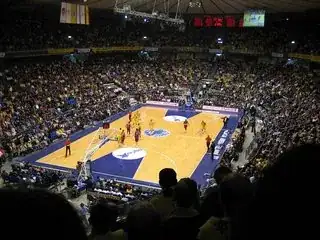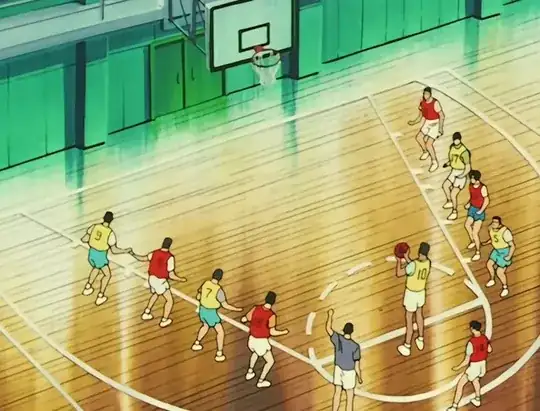Because that was the official court markings by the International Basketball Federation (FIBA) before it was changed in 2008 (effective in 2010) to follow the National Basketball Association (NBA) more closely.
According to the Wikipedia - Basketball court - FIBA changes
FIBA changes
On April 26, 2008, FIBA announced several major rules changes involving the court markings. These changes took effect for major international competitions on October 1, 2010, after that year's World Championships for men and women, and became mandatory for other competitions on October 1, 2012 (although national federations could adopt the new markings before 2012). The changes were as follows.
- The shape of the key changed from a trapezoid to a rectangle as it is in the NBA, with NBA dimensions.
- The three-point line moved back to 6.75 meters (22 ft 1.7 in) from 6.25 meters (20 ft 6.1 in), compared to 23 ft 9 in (7.24 m) for the NBA at the top of the arc.
- The FIBA adopted the NBA's restricted area arc with a marginally wider radius of 1.25 meters (4 ft 1.2 in).
(Emphasis added)
Wikipedia - Key (basketball) explained the differences in more detail, but here is some of the summary:

The different shapes of the key in different basketball disciplines (yellow, from left to right): NBA, NCAA, FIBA 1956–2010, and FIBA since 2010.
| FIBA (until 2010) |
 |
| Menora Mivtachim Arena, Tel Aviv, Israel |
| Prior to 2010, FIBA-specification courts had trapezoidal keys that were 6 meters (20 ft) at the baseline and 3.6 meters (12 ft) at the free throw line. The jump-ball circle was marked with solid lines on both sides of the free-throw line, the inside of which was often used for sponsor advertising. |


